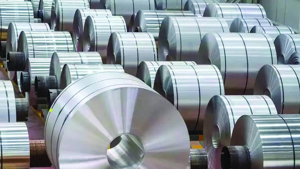
Insurance Premiums Surge as Cars & Homes Face Big Cost Hits
Car and home insurance renewals are becoming significantly more expensive — now’s the time to review your policy.
As global inflation and repair-cost escalation bite, drivers and homeowners are facing steeper insurance premiums. In Germany — a key indicator market — auto insurers are bracing for further rate hikes, even as the wider property-insurance sector catches up with climate-driven losses. This article unpacks the causes, regional impacts, and practical steps policyholders can take to reduce costs.
Rising Auto Insurance Premiums: What’s Driving the Increase?
Auto-insurance companies in Germany are under intense pressure. Recent industry data show that the cost of vehicle parts has surged by more than 80 % over the past decade, significantly outpacing general consumer price inflation. At the same time, repair-shop labour rates and the complexity of vehicle systems have grown, meaning that even minor damage can trigger very costly repairs.
When insurers pay out more in claims and expenses than they collect in premiums, they must respond. In Germany, for example, insurers reportedly paid roughly €5 billion more in claims and expenses than they collected in premiums over a recent two-year span. As a result, insurers are implementing targeted increases in auto-insurance rates to restore profitability. A recent article noted that premiums for some drivers could rise by up to 20 % in 2026, depending on region and coverage type.
Key factors behind the increase include:
- The higher cost of spare parts and labour.
- The rising complexity of modern vehicles (sensors, cameras, ADAS systems) that make even small repairs expensive.
- Regional risk-class upgrades (in Germany’s regionally based system) that push premiums higher in areas with high accident or damage rates.
- Insurers’ use of “introductory” low rates for new customers, followed by increases for existing ones who remain.
- Global re-insurance cost pressure that forces primary insurers to pass on higher costs to policy-holders; for example, major reinsurers signalling that further price increases are necessary.
Regional Variations: Where Drivers Are Hardest Hit
Premium increases are not uniform across all drivers. In Germany’s regional classification system (Regionalklassen), areas with higher claim frequencies or severity are re-classified into higher risk tiers. For those drivers, premiums can increase by larger margins. One report noted that premiums could climb by up to 20 % in some districts.
For example:
- Drivers in large urban centres such as Berlin, Hamburg and the Ruhr region (with above-average claims) will likely face sharper increases.
- In more rural or low-claim districts, in some cases premiums may even decrease if the regional classification improves. However, these cases are the exception rather than the rule.
This regional discrimination means policy-holders must pay closer attention to whether their district’s risk rating has changed — because it can make a substantial difference in renewal cost.
How Auto Policyholders Can Mitigate Rising Premiums
Though the cost environment is challenging, policy-holders are not powerless. Insurance-industry analysis and consumer-advice portals recommend several actionable steps:
- Check for a designated repair-network clause: Some insurers offer discounted rates if you commit to using approved repair workshops. Consumer portal Finanztip found that adding such a clause, coupled with a higher deductible, could cut premiums by over 30 % in some full-coverage policies.
- Raise your deductible (out-of-pocket contribution): A higher deductible reduces the insurer’s risk, which often translates into lower premiums.
- Limit optional cover and restrict drivers list: Declaring only those who actually use the vehicle, and accurately reporting annual mileage, reduces risk and can trim premiums.
- Compare offers and don’t auto-renew without review: Despite the inconvenience of switching insurers — particularly if your car insurance is bundled with other policies — the savings can be substantial. One comparison found a 45-year-old driver could save up to €836 (~US $900) per year by moving from a mid-range to a cheaper plan.
- Pay attention to your region’s classification changes: If your district’s risk rating has increased, you may want to look for better offers or negotiate with your insurer.
Bundled Policies: The Trap of Multi-Policy Loyalty
Insurance companies often bundle auto coverage with home or other policies, offering a loyalty discount for keeping everything under one insurer. While this can save money in the short term, it also reduces flexibility. If you try to switch just the auto part of a bundle, you may face renegotiation of the whole package or lose the combined discount. Consumer advisers urge policy-holders to review each policy on its own merit. If the auto premium looks markedly higher than alternatives, it may make sense to break the bundle — despite the added administrative hassle. Also, some lower-cost insurers are now becoming profitable again, making competitive offers more likely.
Surging Home Insurance Premiums: Climate Risks In Play
The squeeze is not limited to vehicles. Home-insurance (building insurance) premiums are rising in many markets, driven by climate-related claims and construction-cost inflation. In Germany, building-insurance premiums jumped approximately 14.7 % in 2023 and another 7.5 % in 2024 — significantly higher than underlying construction-cost inflation.
Elsewhere, U.S. homeowners in high-risk counties have experienced premium increases around 22 % over the past three years. Insurers say that as disaster payouts and rebuilding costs rise, they must increase premiums to maintain solvency.
Home-owners face additional challenges: Unlike auto insurance where switching can yield large savings, differences in home-insurance quotes are typically smaller and a history of claims (or being in a flood zone) may make it harder to secure a new policy at a good price. Consumer groups therefore caution homeowners not to cancel an existing contract without having a safe replacement lined up.
Practical Steps for Home-Insurance Policy-Holders
Home-owners can also take concrete steps to manage rising premiums:
- Increase your deductible: Opting for a higher voluntary excess (for example, €500 or €1,000) can reduce premiums in double-digit percentages.
- Avoid too many small claims: Filing claims for minor damage can make you appear a higher risk and may lead to higher premiums or non-renewal.
- Maintain or update insured rebuild value: Make sure your policy reflects current rebuilding cost so you’re fully covered in a major event.
- Consider risk-mitigation measures: Some insurers may offer more favorable renewal terms if you install preventive measures (storm shutters, roof reinforcements, etc.).
- Focus on policy-adjustment rather than switching: For home insurance, rather than chasing the lowest premium every year, it may make sense to renegotiate terms or extend your current policy if you have a clean claims record and your insurer is willing.
Why are auto and home-insurance premiums rising so sharply?
For auto-insurance, the big drivers are rising costs of spare parts and repairs, higher labour costs, and increasingly complex vehicles with embedded sensor and camera systems. For home insurance, the increase is driven by a rise in climate-related claims (storms, floods, hail) and higher rebuilding costs.
What concrete steps can policy-holders take to reduce costs?
Policy-holders can increase their deductible, limit optional coverage, use approved repair networks (for auto), accurately declare usage and mileage, compare offers annually, and for home insurance avoid frequent small claims. Cost reductions of 20-30 % or more are possible in some cases.
Is it worth switching insurance providers now?
For auto-insurance, yes: large savings are possible if your premium has increased significantly. Be sure to compare coverage rather than just price. For home insurance, the benefit is less clear: the savings may be smaller and switching may be more complicated if you have recent claims or reside in a high-risk zone.
What Lies Ahead?
More increases appear likely. In Germany’s motor-insurance sector, major reinsurers are signalling that further targeted rate hikes are needed even as losses are being addressed. The home-insurance sector remains under pressure globally from climate-shifted risk profiles and construction-inflation pressures.
From the policy-holder’s perspective, the message is clear: you can no longer rely on passive renewal. Annual review of your insurance coverage, active comparison of offers, and risk-adjusted behavior (lower mileage, restricted drivers, higher upfront payment) may no longer be optional — they are becoming necessary.
In short, while insurers adjust to a new cost reality, the burden of adaptation is shifting increasingly toward drivers and homeowners.
Sources: The Local Germany Fleet Europe meinbavaria.de






